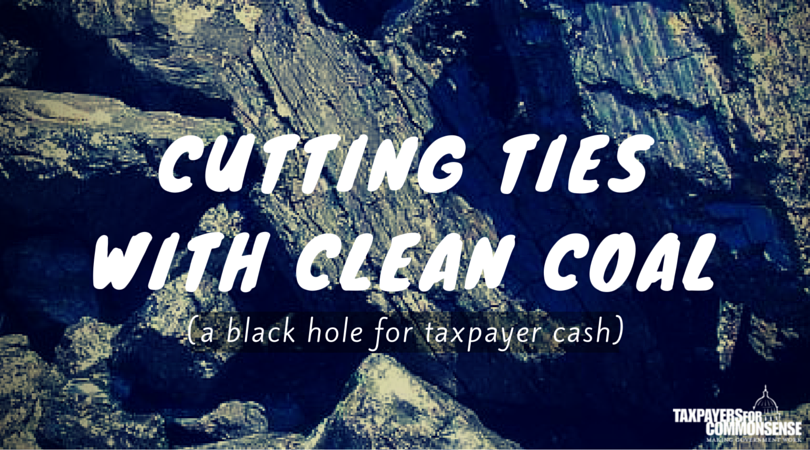
Lawmakers are trying to resuscitate the failed idea of “clean coal” with more subsidies for “carbon capture and storage,” or CCS. The goal is to burn coal with less carbon pollution. Fair enough. The problem is this pursuit has become little more than a black hole for taxpayer cash.
For decades – decades – the Department of Energy (DOE) and lawmakers have been pushing the idea of CCS, which is exactly what it sounds like – trapping carbon dioxide produced from burning coal and either injecting it into the ground for long-term storage or in some cases, using it to help recover oil. They have thrown dollar after dollar at it in an effort to demonstrate that it works and can be commercialized. Billions of dollars later it’s a farce, and worse, a fiscal disaster.
To demonstrate its (supposed) viability, DOE created the Clean Coal Power Initiative (CCPI) in 2002. The program selected eight projects to receive support that year, four more in 2004, and after receiving an infusion of $800 million from the American Recovery and Reinvestment Act of 2009 (aka the stimulus), added another six. The stimulus also awarded an additional $1 billion to the corpse of the FutureGen project and called it Future Gen 2.0, like a bad horror movie sequel. The results of these “major” demonstration projects have been abysmal. Of the 18 CCPI projects, four of the smallest have been completed, eight awards were eventually withdrawn, two were discontinued, and “negotiations ceased” for another. That leaves three, plus FutureGen 2.0.
One project, Summit Power’s Texas Clean Energy Project, has until May 13 to secure some financial backers, or DOE, after five years of extensions, will withdraw funding. DOE Secretary Ernest Moniz has made it abundantly clear to lawmakers that he’s reluctant to take such a step, but said he feels some responsibility to hold the project accountable. About time. In a late-breaking development, a report released this morning by DOE’s Inspector General (IG) specifically about the project confirmed all of our concerns. The IG finds that DOE has bent over backward to accommodate a flailing project, putting millions of taxpayer dollars at risk, and should not hesitate to cut it off as the May deadline approaches.
Another, the infamous Kemper Project, is scheduled to open this year, several years behind schedule and at twice the original cost. And the last of the CCPI projects, Petra Nova, will reportedly open this year, but it’s seen its own share of cost overruns of at least 15 percent. As for FutureGen 2.0, DOE finally pulled the plug last year, after sinking hundreds of millions into that hole.
Then there is the spending for research and development of CCS. This year marks the 20th anniversary of DOE pumping money into this failed endeavor. A new report from the Congressional Research Service (CRS) says DOE has spent roughly $4.7 billion on CCS R&D, just since FY 2010.
Meanwhile, CCS proponents just suckered the Senate to give them billions of dollars in new or expanded subsidies for coal in the recently passed Energy Bill. Over the next five years, the bill authorizes $1.3 billion for coal research and development, $1.1 billion for large-scale demonstration projects, $275 million for not-large-scale demonstration projects, and $88 million for other purportedly carbon cutting projects. The money is not all exclusively for CCS, but the technology is at the front of the line.
Finally, there are the tax breaks. The two main tax breaks for CCS on the books are worth more than $2.5 billion over the next 10 years. Earlier this month, CCS boosters sought to increase one of the tax breaks for the technology by slipping it into a short-term reauthorization bill for the Federal Aviation Administration. Thankfully the effort failed. That is kind of ironic because the clean coal apologists have been failing taxpayers for decades and losing billions of dollars along the way. If industry can figure a way to make this clean coal alchemy work, great. Just don’t ask Uncle Sam for any more handouts.










